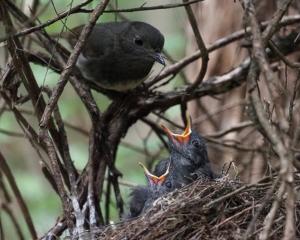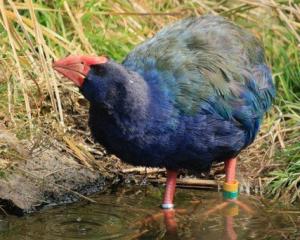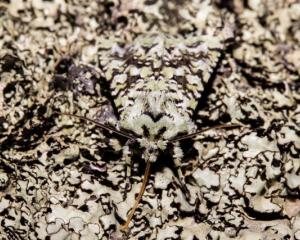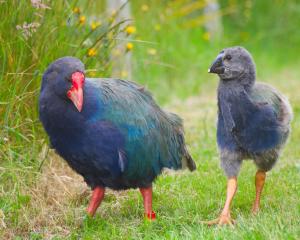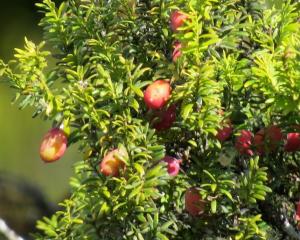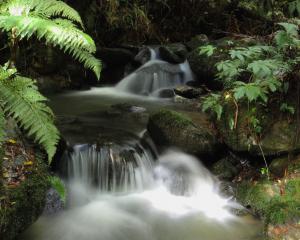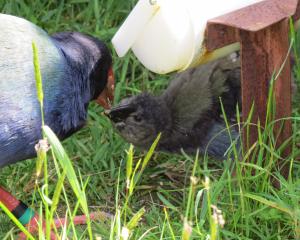The Orokonui Ecosanctuary kiwi creche is back in business. Four of the juvenile Haast tokoeka, which were temporarily removed after a stoat was observed in the ecosanctuary, are back and thriving. Alyth Grant heard their life story from DOC ranger Sian Bent.
Orokonui, in partnership with the Department of Conservation, is one of several designated kiwi creches.
These are protected areas where the young birds have the chance to live independently in a safe environment and to grow to a weight at which it will be safe for them to be returned to their wild home.
The creches are part of the BNZ-funded Operation Nest Egg, in which eggs are taken from the nest and incubated until they hatch.
Then the chicks are hand-raised in brooding pens before being placed in a creche.
This is Doc's response to the sad fact that few kiwi chicks survive to adulthood in the wild.
The number of rats and stoats in the wildness of the Haast ranges is simply too high.
Doc ranger Sian Bent is one of a team of four based in Haast.
It is her responsibility to care for the chicks, and she spent time at Orokonui ensuring the young birds settled in well, preparing their food, monitoring how much of it they were eating and the changes in their weight, as well as training Orokonui ranger Kelly Gough in their care.
The details of each chick - its name, history and progress, and movements around the creche - are recorded digitally and added to daily.
Some expensive technology is crucial to this programme, and every effort is made to ensure the investment in the chicks' care pays off.
Knowledge about kiwi is growing all the time and is used to improve the success rate of the project.
Not all kiwi are the same.
The Haast tokoeka, for example, lay only one egg, while other species lay two, so it is vital that the removal of the egg from the nest happens at the ideal moment.
Known breeding kiwi in the wild are fitted with sophisticated transmitters that can be monitored from the air.
They indicate not only whether a bird is incubating, but how long it has been doing so. Haast tokoeka eggs take 80 days to hatch, and the ideal time to transfer them to incubators is at around 40 days.
Rangers go into the Haast ranges on foot to locate the nest and retrieve the egg, transfer it to the Haast base, then drive it to the incubating station at the West Coast Wildlife Centre in Franz Josef.
There the egg is incubated for the remaining 40 days until hatching.
The new chick is then placed in a brooder, which is fitted with a heat-pad.
During its first 10 days of life the chick is sustained by the remains of the yolk sac, which it ingests after hatching.
In that time it loses weight, so careful attention is required until it regains its weight by learning to feed itself.
At that point it is transferred to Doc-run outside pens at Franz Josef, where it remains until it has reached 800g in weight.
The next stage is transfer to one of several kiwi creches, most of which are on predator-free islands.
There they live in the wild, fending for themselves, but safe from stoats.
After six weeks they are visited by Doc rangers for a health check.
This is known as a ''hard release''.
At Orokonui, however, a ''soft release'' is being trialled, with the aim of reducing the stress and consequent weight-loss involved in moving the birds.
The mainland site makes it is easier to monitor them on a daily basis during the settling-in period, after which the amount of supplementary food is gradually reduced as they learn to browse for wild food.
This strategy appears to be working, as the Orokonui birds maintained good weight gains despite the stress of the translocation, which is unheard of with birds involved in a hard release.
The present young birds may graduate to one of four kiwi kohanga sites (of which Orokonui is one, the other three being in Southland), or more probably directly back into the large sanctuary in the Haast ranges, as by the time they leave they will have reached around 1500g in weight, sufficiently large to defend themselves against stoats.
Then Orokonui will look forward to the arrival of the next generation, continuing the life-giving cycle of the rescue programme.
• Sian Bent is a biodiversity ranger for the Department of Conservation based at Haast, with special responsibility for the Haast tokoeka Operation Nest Egg programme.


